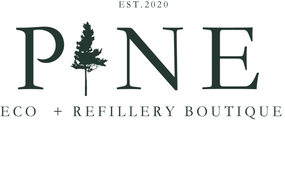Benzene: How Is It Still In Products?

It's one thing to talk about something, it's quite another when it happens to you.
Over the past few years we have talked and written a lot about harmful ingredients in personal and home care products. We have written about the effects these chemicals have on our bodies: reproductive system toxicity, immune system toxicity, skin, lung and eye irritation, and cancer.
Life throws enough at us that the thought of scouring labels looking for undecipherable chemicals that may or may not even be listed is too much. Forget it. It's easier to think "I don't use that much" or "I don't use this cleaner that often" so it's fine. After all, companies wouldn't make products they know are bad for us, right? Wrong! They do make products with toxic chemicals. A handful of big companies (such as: Proctor & Gamble, Johnson & Johnson, Colgate Palmolive) make the majority of everyday household and personal products. It's a tough pill to swallow, but the products these companies produce make people sick.
When you hear or read the same thing over and over again, "skin, lung and eye irritation, organ-system toxicity, carcinogenic", the impact is lost. Many ingredients make up a small percentage of a products composition, but the cumulative effect of the solvents/surfactants/viscosity-adjusters/preservatives both per use and with repetitive use is devastating. Dawn dish soap is made with 22 ingredients (really 20 because water and salt are 2 of them). A total of 22 ingredients seems like a lot, but the actual number of chemicals is much higher and hidden from consumers. "Fragrance" in Dawn Original Formula Dish Soap is a combination of at least 30 chemicals, some of which release formaldehyde and others that are carcinogenic. The "Color" includes a combination of 3 of the 4 most harmful chemical dyes: Blue 1, Yellow 5 and Red 33.
"Three dyes (
https://pubmed.ncbi.nlm.nih.gov/23026007/#:~:text=Three%20dyes%20(Red%2040%2C%20Yellow,5%20were%20positive%20for%20genotoxicity.
And from the EPA:
"Chronic (long-term) exposure to benzidine in humans may result in injury to the bladder. Epidemiological studies have shown occupational exposure to benzidine to result in an increased risk of bladder cancer."
While investigating possible causes of lymphoma and leukemia I came across an article published in The Lancet last year that has left me numb. The attached study shows that exposure to benzene is linked to Non-Hodgkin Lymphoma.
"Benzene is classified as a Group 1 carcinogen by the International
Agency for Research on Cancer (IARC) because it causes
acute myeloid leukaemia and induces a variety of adverse
health effects, including possible lymphomagenesis.
Benzene is the backbone of the chemical manufacturing
industry. Given benzene’s highly reactive metabolites
and simple aromatic structure, it is indispensable in the
production of many key chemicals used in the synthesis
of plastics, resins, and other fibres.1 Annual production
of benzene by the petrochemical industry was estimated
at nearly 2 billion tonnes in the USA alone in 2016, with
demands expected to increase as dependence upon
consumer goods continues to rise.2"
Keep in mind as you contemplate the range of products made with benzene that exposure to this toxic petroleum-based ingredient is cumulative. Simply put, multiple exposures to benzene accumulate in your body and the US FDA knew 45 years ago that any exposure to benzene was unacceptable and it was banned. So how is it in products now?
Did you know that benzene is in hundreds of personal care products? 'The French lab, Valisure, last year detected benzene in hand sanitizers, sunscreens, deodorant, dry shampoos, conditioners, antiperspirants, deodorants, body sprays and anti-fungal treatments. The contamination has been most frequently detected in aerosol or spray products, some at levels the Food and Drug Administration characterized as “life-threatening”...
No safe levels of exposure to benzene are safe, because it is so toxic even at low levels. The petroleum-based chemical “causes cancer”, especially leukemia and in blood forming organs, the US Department of Health and Human Services wrote. The toxin has also been shown to harm the central nervous system and reproductive organs.
The US banned benzene as an ingredient 45 years ago and yet it was an ingredient in many brands of hand sanitizer sold this year. Companies claim they aren't using benzene in their formulations and yet the Valisure lab analysis revealed it was present in 27% of 300 sunscreens tested. Among the products found to contain benzene were Banana Boat, Neutrogena and Raw Elements sunscreens, Old Spice and Secret deodorant sprays and Pantene, Aveeno and Herbal Essence products. A test showed that following use of Old Spice deodorant spray in a 1.8 square meter bathroom 26ppb of benzene remained. So anyone using the bathroom would breathe in a toxic amount of this cancer causing chemical.
Valisure most frequently found benzene in body sprays, which includes deodorants and anti-perspirants: nearly half of the 108 products from 30 different brands contained it. The highest levels were found in Sure, Old Spice, Secret, Equate, Right Guard, Tag and Brut.
https://cen.acs.org/business/consumer-products/Finding-benzene-everywhere-look/100/i1
https://www.thelancet.com/journals/lanplh/article/PIIS2542-5196(21)00149-2/fulltext
What does benzene have to do with Febreze and Fragrance? More than 95% of the chemicals in synthetic fragrances are derived from petrochemicals such as benzene derivatives and aldehydes, which are formaldehyde-releasing chemicals. If you are able to find a list of fragrance components in a given product, the word "benzene" will not appear. But don't be fooled. It's there with a different name. Look out for benzophenone and Synonym(s): A-OXODIPHENYLMETHANE; A-OXODITANE; BENZENE, BENZOYL-; BENZOYL- BENZENE; BENZOYLBENZENE; DIPHENYL KETONE; DIPHENYL- METHANONE; DIPHENYLMETHANONE; METHANONE, DIPHENYL; METHANONE, DIPHENYL-; PHENYL KETONE" - EWG
https://www.safecosmeticsaustralia.com.au/key-issues
A google search of the best selling dish soap in Canada led to a recent Good Housekeeping article, which ranked the "11 Best Dish Soaps of 2022". Guess which was #1? I'll give you a hint: it's blue.
https://www.goodhousekeeping.com/home-products/g29209634/best-dish-soaps/
We share all of this because it's alarming, it's real, and it's solvable. We've gotten so used to perfumes and neon colored dish soap that we aren't seeing what's really in it - we can't see benzene and aldehydes. We've been conditioned to just see marketing.
Since starting Pine, we've been on our own 'chemical awakening' process, and we encourage you to share this info with others so we can help others take preventative measures to protect themselves against these hidden, harmful chemicals. So much of this journey is about truth; and we hope you'll do your own research as well to know what's safe and what to avoid.
Let's keep it simple, and live not by lies.

Leave a comment